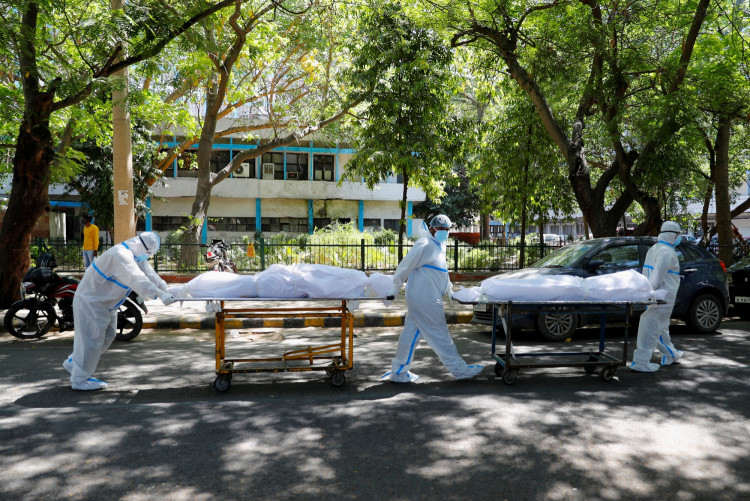First seen in India in February, the World Health Organization has designated B.1.617 and its sub-lineages as a "variant of concern."
These sub lineages - B.1.617.1, B.1.617.2 and B.1.617.3 - have the same mutations as B.1.617, plus a few extras.
The B.1.617.1 and B.1.617.2 lineages have become more common as cases in India have seen a "major upsurge," according to the U.S. Centers for Disease Control and Prevention.
The CDC has classified variants into three categories: variants of interest, which have the potential to be dangerous but haven't yet caused much disruption; variants of concern, which are more contagious, evade certain treatments, cause more severe disease, or get past diagnostic tests; and variants of high consequence, which significantly evade the effects of vaccination.
B.1.617 is known as a "double mutant" since it has two mutations - the E484Q and L452R, that can make the virus more infectious and better at evading the body's defenses. According to the WHO, a third mutation in the version, can result in "enhanced transmission."
Virologists who spoke to CNBC, however, said the term "double mutation" or "triple mutation" is not scientifically accurate. Reports said the B.1.617 has more than a dozen mutations.
The WHO reported that B.1.617 showed signs of being more transmissible than other strains of the virus, but warned that more research was required. While Indian officials claim the variant is to blame for the country's crippling second wave, the WHO has stated that many other factors, such as mass gatherings, have likely also contributed to the spread.
There is currently no proof that B.1.617 is more deadly than other COVID variants.
"There is currently insufficient evidence to indicate that any of the variants recently detected in India cause more severe disease," Public Health England said on May 7.
Laboratory testing on the efficacy of the Pfizer and Moderna vaccines against the variants identified in India revealed that the shots tend to protect against variants. The results were published on Sunday in a pre-print paper on biorxiv.org, which has not yet been peer-reviewed.
Serum samples were obtained from eight people who had recovered from COVID-19, six people who had been fully vaccinated with the Pfizer vaccine, and three people who had been fully vaccinated with Moderna's. In lab experiments, the researchers looked at how serum samples neutralized lentiviruses, which are retroviruses with the same mutations as the B.1.617 and B.1.618 coronavirus variants.
They discovered some declines in neutralization, but overall, antibodies from vaccinated people tended to function "way above" serum from people who recovered from COVID-19 caused by earlier variants of the coronavirus.
More research is required to decide how effective the vaccines are against those variants in the real world, according to the researchers.
According to the WHO, B.1.617 has been found in 44 countries on all continents except Antarctica.
The U.K. has reported the largest number of cases of the strain outside India, it said.
Meanwhile, in the U.S., the CDC continues to classify it as a "variant of interest," but notes that this classification may change based on scientific evidence.






